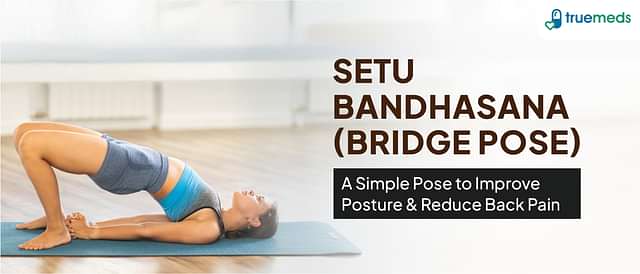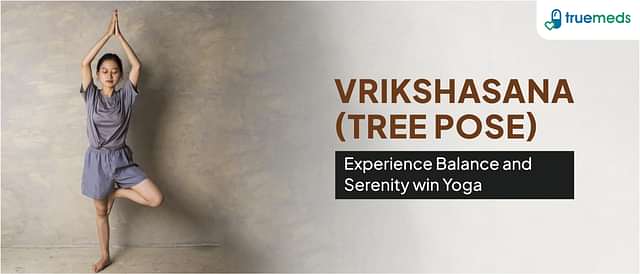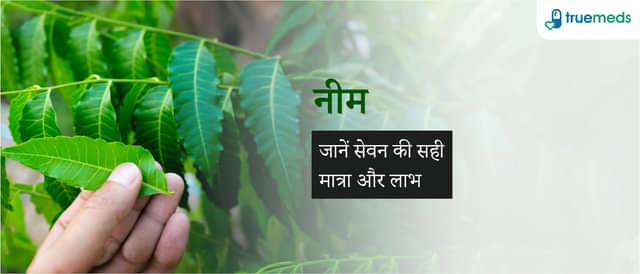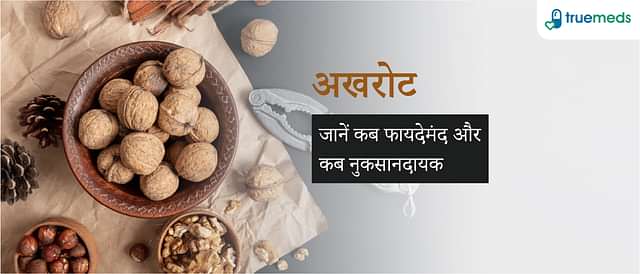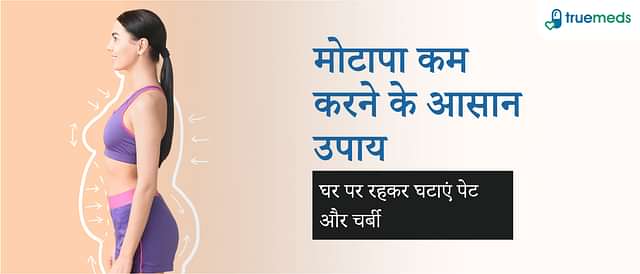Health Benefits of Ustrasana (Camel Pose) and How to do It
Last updated on : 24 Jan, 2025
Read time : 12 min
Introduction
Yoga is an age-old Indian discipline that combines mental, physical, and spiritual practices to enhance overall health. Ustrasana, also known as Camel Pose, is one of the many yoga poses that is particularly beneficial to both physical and mental well-being. In addition to increasing flexibility, this backbend strengthens the body and promotes mental clarity.
The famed Ustrasana has been linked to opening the heart chakra, which can lead to sentiments of love, compassion, and optimism. In addition to strengthening the back muscles, the posture extends to the front of the body, which includes the thighs, chest, and abdomen. These health advantages might lessen back pain and help with posture.
Furthermore, the practice of Ustrasana, or bending backwards, helps activate the nervous system, increasing vitality and decreasing weariness. As with every yoga pose, to safely achieve the full benefits of Ustrasana, you must approach it with mindfulness, respect for your body’s limitations, and an emphasis on good alignment.
In this article, we will explore the numerous health advantages of Ustrasana, provide instructions on how to perform it correctly and emphasise key safety measures to consider when practising.
What is Ustrasana (Camel Pose)?
Ustrasana, also known as Camel Pose, is a classic yoga posture that activates the Anahata or the heart chakra. It is a deep backbend done from a kneeling position, mimicking a camel’s stance, with “Ustra” meaning camel and “Asana” meaning pose in Sanskrit. This pose opens up the chest and back, improving posture and preventing slouching. Ustrasana works the entire body’s muscles, increasing spinal flexibility while relieving stiffness in the lower back. It is highly beneficial for those looking to enhance flexibility, strength, and overall body alignment. In yoga, Ustrasana is revered for its ability to stimulate various body systems and bring balance to both the physical and emotional aspects of well-being.
Steps to Perform Ustrasana (Camel Pose)
It is essential to perform Ustrasana correctly in order to reap its benefits and prevent harm. The Ustrasana steps to practising are as follows:
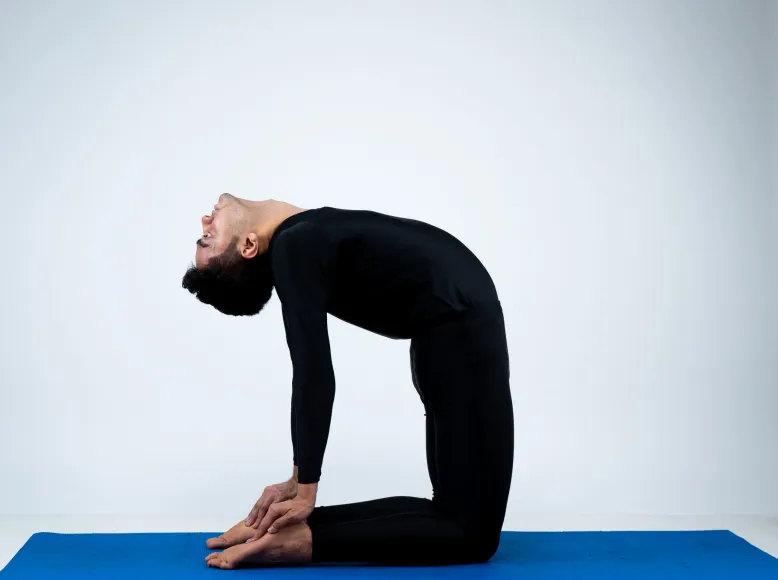
- Begin in a kneeling position: To start, take a kneeling position: Place your knees hip-width apart on your yoga mat. Make sure your thighs are parallel to the ground.
- Hands should be on hips: To support your back while you bend, place your hands on your lower back with your fingers facing downward.
- Breathe in and raise your chest: As you inhale, lift your chest toward the ceiling to lengthen your spine.
- Slowly lean back: With your hands supporting your lower back, gently lean back.
- Reach for your heels: If it’s comfortable for you, extend your hands back and grab your heels. Make sure that your hips stay above your knees.
- Relax your neck: Try not to strain your neck by letting your head fall back naturally.
- Hold the pose: Breathe deeply while you hold this pose for 20 to 30 seconds.
- Release the pose: To release yourself from the pose, return your hands to your hips, take a deep breath, and slowly raise your body to your knees.
What Are the Health Benefits of Ustrasana (Camel Pose)?
With numerous health benefits, Ustrasana is a valuable addition to any yoga practice. It improves flexibility, posture, and blood circulation while relieving stress, anxiety, and back pain. This pose also helps activate the heart chakra, promoting emotional well-being. Let’s explore the key benefits of Ustrasana:
1) Enhances Flexibility
Ustrasana improves flexibility by stretching different body parts at once. The front of the body, comprising the chest, abdomen, and quadriceps, is extensively stretched when doing Ustrasana. This thorough stretch aids in releasing tense muscles and increasing the body’s general flexibility. Frequent practice of Ustrasana can facilitate more fluid and graceful movement by making other yoga poses and physical activities easier to execute. Not only can flexibility be used to accomplish challenging poses, but it also improves posture and lowers the chance of injury in daily life.
2) Strengthens the Back
The strengthening of the back muscles is one of the main advantages of using Ustrasana. The back muscles are used and trained when you bend back into the posture. In addition to helping to relieve back pain and suffering, this strengthening is essential for keeping proper posture. Regular practice of Ustrasana can help you build a stronger back that better supports your spine, which lowers your chance of back pain and injuries. A stronger back supports the entire skeleton more effectively, which improves your overall mobility and stability.
3) Opens the Chest
The benefits of Ustrasana in opening the chest are well established. This stance helps to expand the chest and expand the lung capacity, which enhances respiratory performance. Those with respiratory conditions like asthma or chronic bronchitis benefit most from opening their chests. It facilitates deeper breathing, which can enhance general health and the body’s ability to oxygenate itself. Furthermore, Ustrasana’s chest opening can aid in relieving emotional stress held in the chest region, encouraging emotional well-being and an open feeling of existence.
4) Stimulates the Digestive System
Ustrasana’s beneficial effects on the digestive tract are yet another important advantage. The deep abdominal stretch enhances the function of the digestive organs by stimulating them. This can help prevent problems like constipation and help the body break down food more efficiently. This stance encourages better peristalsis or the wave-like action that propels food through the digestive tract. Ustrasana can help you maintain a healthier gut and lessen the discomfort associated with digestive difficulties by improving the effectiveness of the digestive system.
5) Improves Blood Circulation
One way to promote blood circulation throughout the body is to practice Ustrasana. By encouraging blood flow, the position helps to ensure that all body components receive adequate amounts of oxygen and vital minerals. Because it facilitates the elimination of metabolic waste products, improves cellular function, and increases energy levels, improved circulation is essential for general health. Improved blood flow also contributes to improved general health and vigor by supporting the body’s systems and organs in their operations.
6) Reduces Stress
Ustrasana is very effective in reducing stress. Lowering stress and anxiety levels is achieved by the pose’s promotion of relaxation and bodily release. Deep breathing is made possible by the backward bend, which opens the chest and triggers the parasympathetic nerve system, which in turn induces relaxation. Bending backwards physically can also aid in releasing emotional stress that has been held in the body, which can result in a feeling of relaxation and calmness. Practising Ustrasana on a regular basis can help you stay mentally and emotionally balanced by acting as an excellent stress-reduction strategy.
7) Chakra Balancing
Ustrasana is recognised for its ability to awaken and balance the Anahata, or heart, chakra. The heart chakra is associated with compassion, love, and emotional equilibrium. By opening the chest and allowing energy to flow freely, Ustrasana can help clear blockages in the heart chakra, promoting a greater sense of empathy and emotional well-being. Balancing the heart chakra is crucial for developing healthy relationships and maintaining a compassionate outlook on life. The practice of Ustrasana can contribute to both physical and emotional healing, fostering a deeper connection with oneself and others.
Risks of Ustrasana (Camel Pose)
Although there are many advantages to using Ustrasana, there are also some hazards involved if not used properly:
- Back Injury: Improper form can cause damage by putting strain on the lower back.
- Neck discomfort: Excessive head backwards tilting can result in neck discomfort.
- Knee Pressure: Excessive weight bearing on the knees may result in soreness or damage.
- Dizziness: Entering or exiting the position too rapidly may result in lightheadedness or dizziness.
Who Should Avoid Ustrasana Yoga?
Some people should refrain from performing Ustrasana yoga or seek medical advice before doing so:
- Back or Neck Injuries: Individuals with major back or neck difficulties should avoid this pose.
- High Blood Pressure: People who have elevated blood pressure ought to exercise caution.
- Hernia: Deep backbends should be avoided for those who have a hernia.
- Recent Surgery: People who have recently had surgery should only practice this pose once they are completely healed.
Tips for Practicing Ustrasana (Camel Pose)
Take into consideration the following advice in order to perform Ustrasana safely and effectively:
- Warm-Up: Before attempting Ustrasana, always warm up with some light stretches.
- Use Props: If you’re just starting out, use a bolster or yoga blocks for support.
- Pay Attention to Alignment: make sure your spine is extended, and your hips remain above your knees.
- Pay Attention to Your Body: Avoid forcing yourself into the position. Start out slowly and stop if you experience any pain.
Precautions to Take With Ustrasana
You can minimise the risks of damage and get the most out of Ustrasana by taking the following precautions:
- Refrain from Overstretching: Don’t push your body above its present level of flexibility into the position.
- Support Your Back: As you lean back, use your hands to support your lower back.
- Keep Your Neck Neutral: Avoid slouching too far back to avoid putting tension on your neck.
- Practice Mindfully: Be attentive to your body’s cues and engage in mindful movement.
Historical Evidence of Ustrasana Yoga
Ustrasana is steeped in ancient Indian customs and has a long past. Similar to numerous other yoga poses, this one represents the holistic method of harmonizing one’s physical, mental, and spiritual health. Ustrasana is a sign of strength and flexibility that has endured throughout history, as seen by ancient documents and sculptures. It represents the practice of yoga’s enduring nature and its capacity to enhance general health. In addition to being a physical posture, the camel stance is highly respected for its ability to arouse a practitioner’s spiritual energy.
Ustrasana is mentioned frequently in traditional yoga books, underscoring its importance in the asana practice. The camel stance, which is said to lengthen the front body and expand the heart, is said to foster courage, compassion, and self-acceptance. Apart from its physical advantages, like better posture and flexibility, Ustrasana is said to be a doorway to more profound spiritual experiences. People can access the transformational potential of this ancient position and establish a connection with the centuries-old knowledge and history of yoga by incorporating it into their contemporary yoga practices.
Takeaway
Ustrasana, or Camel Pose, is a potent yoga pose with numerous health advantages. Ustrasana can greatly improve your physical and emotional well-being by fostering improved digestion, lowering stress, and strengthening your back, among other things. But you must exercise caution when doing this pose, especially if you have any health issues. Always pay attention to your body’s signals, and seek medical advice as necessary. Include Ustrasana in your yoga practice to get its deep advantages and enhance your general health.
Follow the guidelines and precautions provided in this blog to practice Ustrasana safely and successfully and reap its many health advantages. Remember that consistency and focused practice are essential to fully benefiting from this potent yoga pose.
Get our easy-to-use Truemeds app for affordable medicines. Just upload your prescription to access both brand-name and substitute drugs. Save money on your purchases and enjoy the added convenience of free home delivery on eligible orders across India*.
Frequently Asked Questions (FAQ)
Ustrasana, or Camel Pose, offers numerous benefits, including improved spinal flexibility, strengthened back muscles, enhanced lung capacity, better digestion, and reduced stress. By opening the chest and stretching the front body, it promotes better posture and emotional balance.
Ustrasana is particularly beneficial for alleviating back pain and improving posture-related issues. It also aids in respiratory problems by opening the chest and enhancing lung capacity.
Initially, you should stay in Ustrasana for about 20-30 seconds, gradually increasing the duration as you become more comfortable and flexible. It’s important to maintain steady breathing and listen to your body’s limits.
To perform Ustrasana, begin by kneeling with knees hip-width apart. Place your hands on your lower back for support, inhale and lift your chest, then gently lean back and reach for your heels. Let your head drop back naturally, holding the pose while breathing deeply.
Ustrasana falls under the category of backbend yoga poses, specifically designed to open the front body and strengthen the back.
The techniques of Ustrasana include maintaining proper alignment by keeping the thighs perpendicular to the floor, using hands for support while bending back, and ensuring the hips remain over the knees. Additionally, using props like yoga blocks can help beginners perform the pose safely.
References:
- Arora, S., & Bhattacharjee, J. (2008). Modulation of immune responses in stress by Yoga. International Journal of Yoga/International Journal of Yoga, 1(2), 45. https://doi.org/10.4103/0973-6131.43541
- Prathikanti, S., Rivera, R., Cochran, A., Tungol, J. G., Fayazmanesh, N., & Weinmann, E. (2017). Treating major depression with yoga: A prospective, randomised, controlled pilot trial. PloS One, 12(3), e0173869. https://doi.org/10.1371/journal.pone.0173869
- Sharma, K., Maity, K., Goel, S., Kanwar, S., & Anand, A. (2023). Common Yoga Protocol Increases Peripheral Blood CD34+ Cells: An Open-Label Single-Arm Exploratory Trial. Journal of Multidisciplinary Healthcare, Volume 16, 1721–1736. https://doi.org/10.2147/jmdh.s377869
Disclaimer
Our healthcare experts have carefully reviewed and compiled the information presented here to ensure accuracy and trustworthiness. It is important to note that this information serves as a general overview of the topic and is for informational purposes only. It is not intended to diagnose, prevent, or cure any health problem. This page does not establish a doctor-patient relationship, nor does it replace the advice or consultation of a registered medical practitioner. We recommend seeking guidance from your registered medical practitioner for any questions or concerns regarding your medical condition.
Popular Articles
Recommended Articles
Recent Articles
Top-Selling Medicines:
...View more
Top-Selling OTC:
...View more
Company
About UsHealth ArticleHealth StoriesDiseases & Health ConditionsAll MedicinesAll BrandsNeed HelpFAQSubscribe
Registered Office Address
Grievance Officer
Download Truemeds

Contact Us
Our customer representative team is available 7 days a week from 9 am - 9 pm.
v3.7.8
Our Payment Partners










